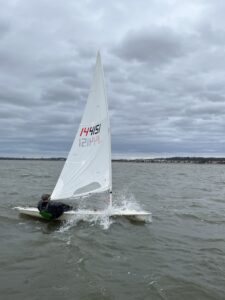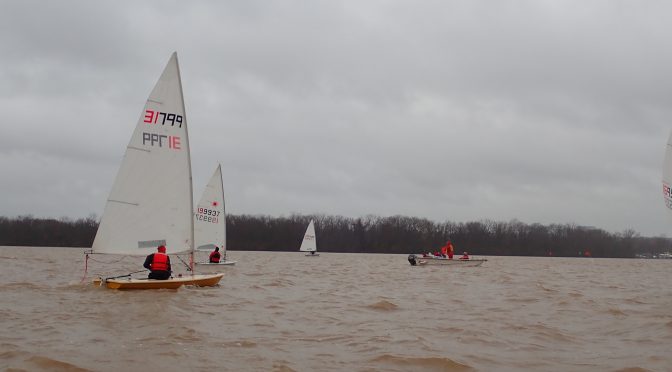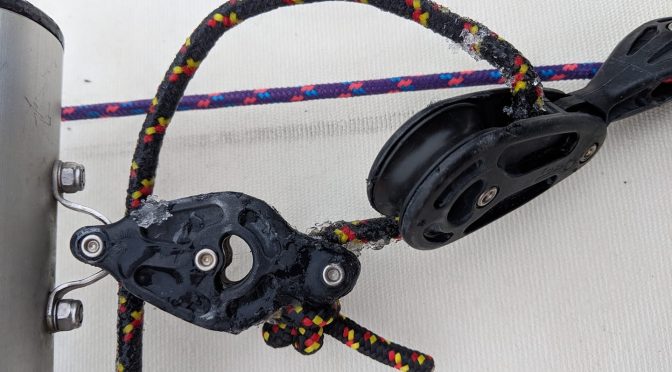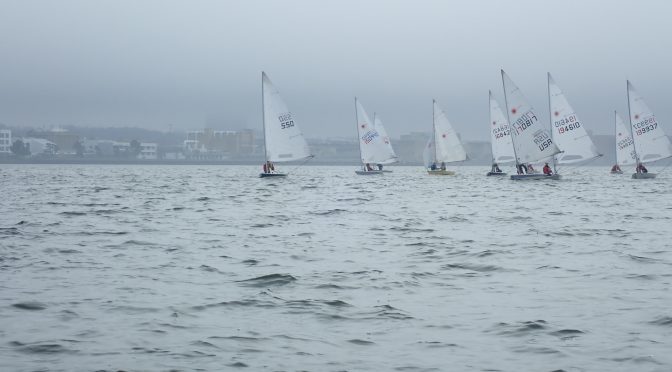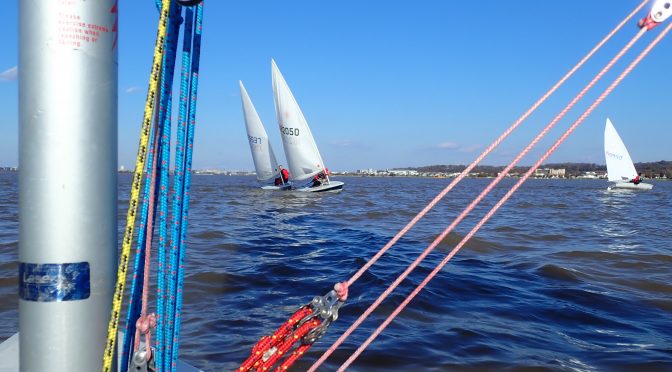Sunday was an awesome day for sailing! Huge thanks to the RC for putting on six fantastic races. The breeze was shifty, ranging from 10-17 knots, with a few gusts creeping into the low 20s—right on the edge of my threshold for switching to the radial. At 15+ knots, I feel like I gain more by keeping the boat flat and pointing higher with the radial than I lose in sail area.
Starts:
The boat end was favored, and at times, it almost felt like you could lay the mark straight from the boat. (Well, except for that one start where tacking immediately was the only way to cross the starting line!) My plan was to start near the boat but not necessarily fight to win it, and I noticed many others had the same idea.
One thing that stood out was late acceleration. A lot of boats were setting up too close to the line without putting their bow down early enough. If you don’t accelerate in those last few seconds, it doesn’t matter how good your position is—you’ll just get rolled. Hitting full speed at the gun is something I’ve been working on this season, and it definitely makes a difference in these short races.
First Beat:
With shifty conditions, I noticed a lot of sailors staying on the headed tack longer than they should. I often found myself pinned by boats that weren’t tacking on the shifts. To stay flexible, I tried to work the middle of the course, looking for opportunities to take advantage of the shifts.
Downwind:
I’ll be the first to admit—I’m not the fastest downwind. Rounding the windward mark a couple of boat lengths behind Steen, I’d watch him pull ahead by 8+ lengths by the time we were ¾ of the way down. But hey, I stayed upright, which is definitely faster than the alternative!
One thing that helped me stay in control was my vang setup. My boat is rigged so there’s just enough play in the vang to clip it to the boom, sometimes I even need to hold the boom down to clip it in. The setup limits how high the boom can rise when the vang is fully eased. The boats that seemed out of control downwind had a lot more vang play, which was obvious from how high/twisted their booms were. I think the solution is both to sail with more vang on and to limit how much vang can be eased. I still blow the vang before the windward mark and then put a bit back on to maintain control downwind.
Leeward Mark & Second Beat:
I focused on tight mark roundings, slowing down when I was the outside boat if necessary to sail wide and tight. I didn’t see much advantage in staying on port, so I almost always tacked as soon as I could (though I mistimed one and ended up in irons at the mark—lesson learned!).
For the second beat, I tried to stay on starboard as long as possible, waiting for the shifts to sail the lifted tack up to the mark. I wasn’t pinned by other boats, as those I rounded the mark with tended to stay on port. That gave me the freedom to tack and focus on easing, hiking, and trimming my way to the mark while keeping the boat flat, which was not easy in some of the bigger gusts.
All in all, a great day on the water! Looking forward to the next one.
Tyler


